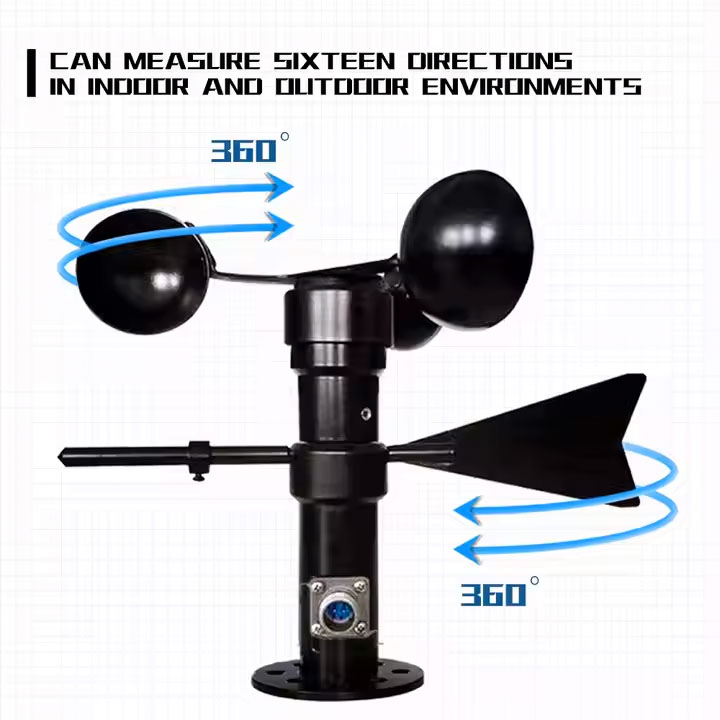In the modern hub where port quay cranes stand in rows and airport runways interweave, an environmental perception network composed of high-precision wind speed and direction sensors is silently safeguarding the safety and efficiency of these economic lifelines. These seemingly small devices have become core technical equipment for dealing with sudden gusts of wind and ensuring the safety of operations.
At busy international ports, the efficiency of loading and unloading per second is crucial to the stability of the global supply chain. When large port cranes (quay cranes) are hoisting containers, their huge windward surface makes them extremely sensitive to crosswind. The ultrasonic wind speed sensor installed at the highest point of the wharf can monitor the subtle changes in wind speed and direction in real time. When the system detects that the gust or crosswind speed exceeds the safety threshold, it will immediately issue an alarm to the crane control system and even automatically limit the working height and amplitude, effectively preventing accidents such as lifting gear shaking, goods falling, and equipment overturning caused by wind force.
For ports, wind is not only meteorological data but also a direct instruction for production and safety. The manager of the operation department of a certain port stated, “The real-time data provided by this meteorological monitoring system serves as the scientific basis for our decision to suspend operations or continue efficient operations.” ”
Similarly, in the airport field, the role of wind speed and direction sensors is equally crucial. The takeoff and landing of aircraft, the connection of jet Bridges, and the operation of ground support vehicles are all directly affected by wind conditions.
Flight safety: The wind vane bags at both ends of the runway are intuitive indicators, but the control tower relies on the precise real-time data provided by digital anemometers connected to the airport weather station to direct aircraft to take off and land against the wind and avoid dangerous crosswind and wind shear.
Ground operations: Strong winds may blow ground support equipment into the fuselage of the aircraft. Real-time wind condition monitoring provides safety window guidance for ground operations.
From cranes at ports to runways at airports, these key hubs have transformed uncontrollable natural factors into manageable and early warning risk indicators by deploying environmental monitoring systems. Experts point out that with the development of Internet of Things (iot) technology, the in-depth application of high-precision wind speed and direction sensors will continue to lay a solid foundation for the intelligent operation and intrinsic safety of critical infrastructure.
For more sensor information, please contact Honde Technology Co., LTD.
WhatsApp: +86-15210548582
Email: info@hondetech.com
Company website: www.hondetechco.com
Post time: Oct-14-2025


